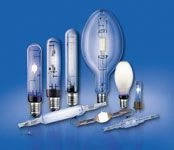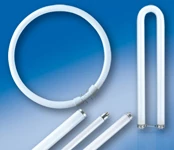Overview of the disposal of illuminants
Since 13 August 2005, the European Directive on Waste Electrical and Electronic Equipment (WEEE), or ElektroG for short, has been in force.
Since then, all fluorescent tubes, energy-saving lamps and gas discharge lamps must be professionally recycled. These also contain a small amount of mercury, which can be removed in an environmentally friendly process in recycling plants and processed for further use. The mercury is therefore not released into the environment. As these lamp types contain electronic components (including LED lamps), they must not be disposed of in household waste, but must be disposed of separately. These lamps are marked with a crossed-out dustbin.
Not least from an ecological point of view, it is essential that these lamps do not end up in the household waste.
Which lamps must be disposed of


Incandescent lamps and halogen lamps can be disposed of in household waste
Not in glass containers, because lamp glass has different properties than bottle glass. Incandescent lamps are made of glass and metal and contain no environmentally relevant substances.



Discharge lamps, metal halide lamps, energy saving lamps, fluorescent lamps
 Contain in addition to recyclable fluorescent material small amounts of mercury.
Contain in addition to recyclable fluorescent material small amounts of mercury.
As these lamp types contain electronic components, they may not be disposed of in household waste or in bottle glass recycling containers, but must be disposed of separately. Notes on broken lamps.

LED lamps
Due to the electronic components contained and possible traces of toxic substances in the LED chips, they must not be disposed of in residual or household waste. 

